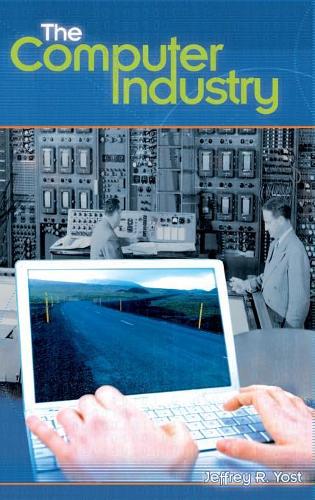
The Computer Industry
(Hardback)
Publishing Details
The Computer Industry
By (Author) Jeffrey R. Yost
Bloomsbury Publishing PLC
Greenwood Press
30th June 2005
United States
Classifications
General
Non Fiction
338.470040973
Physical Properties
Hardback
288
Width 156mm, Height 235mm
567g
Description
Traces the emergence and development of the computer industry in the United States Originally a military and scientific computational tool of a small number of government, scientific, and corporate elites in the late 1940s, the computer has evolved significantly in less than seventy years to become a revolutionary technology and the basis for one the largest industries. The Internet, email and the personal computer have become necessities in most offices and college rooms and many homes. Narrative chapters trace the emergence and development of the computer industry in the United States as seen in the economic, historical, and social context of its times from the early twentieth century to the present. From punched cards and tabulating machines to the first digital computer companies in the early 1950s, Yost describes how the concept of the computer was born in the late 1800s but did not evolve into the personal computer until the late 1970s and 1980s. The computer has emerged from a relatively narrow scientific computational machine to a vast data processing and communication technology. Subjects discussed include: well-known names such as IBM and Bill Gates, Apple and Macintosh; the internet and the world wide web; the mainframe digital computer; the invention of the transistor; software development; supercomputing and minicomputing. The book includes an appendix of over twenty company profiles of key businesses in the industry, a timeline, and suggestions for further reading and research. Ideal for students and general readers interested in the development of computers and the history of the computer industry.. Part of the Emerging Industries in the United States series. Provides a history of an industry that has grown exponentially over the last 20 years. Surveys a high-interest topic; the majority of people have access to a personal computer, email and the internet
Reviews
Yost examines different phases of the development of the computer industry, beginning with its prehistory (1880-1939) and ending with the computer networking revolution (1990-2004). His account details the contributions of business, government, and academia to each phase. Before the first chapter, a time line (1943-2004) of significant computer industry developments is provided. Interesting photographs of computer industry personages and computer hardware are provided throughout, courtesy of the Charles Babbage Institute, the IBM Archives, and the MIT Museum. An appendix contains profiles of significant companies in the computer industry categorized along the lines of hardware, software/programming services, and networking/e-commerce. The Suggestions for Further Reading and Research section offers illuminating commentary by the author and is much more than just a reading list. The index provides a convenient list of the names of the important contributors to the development of the computer industry. A valuable book for anyone interested in the evolution and future of the computer industry. Summing Up: Highly recommended. All collections. * Choice *
[T]he author does a very good job of synthesizing scholarship and providing a clear and readable overview. The prehistory section contains a series of useful profiles of the pre-war business machine sector. Individuals and companies feature, including Tom Watson and IBM, Remington Rand, Burroughs and so on. (There is also a very useful appendix with company data for the major firms in the industry) The author does well in placing the industry in its long term context--and restates the important point that firms which develop strategic capabilities at the pre-computer stage are frequently those which succeed at a later date, ahead of firms with more 'technological' expertise.[t]his is a very good entry point for those wishing to get a thorough grounding in the US computer industry and its history. * Business History *
Although the computer industry appears to be securely entrenched in the US, in some ways it is just settling in. Technologies come and go in rapid order, and elements of the business, especially those at the cutting edge, are as volatile as any newborn. Yost starts with the work of Babbage in the first quarter of the 19th century and continues with discussion of mainframe digital computers designed in the Second World War, the broadening of the mainframe industry and the segmentation of the supercomputing and minicomputing sectors through the mid 1970s, the rise of the personal computer and user-friendly software, and the networking revolution that continues to the present. He makes some interesting predictions about the future in the industry in his conclusion and also gives profiles of companies in the industry. * SciTech Book News *
This book is well written and very concise. The book is a nice compliment to the History of Modern Computing. The History of Modern Computing covers the evolution of the computer industry from 1945 to 1998 and concentrates much of its discussion on various technologies. The Computer Industry does an excellent job of identifying various companies and people who had a major impact on the computer industry. The author does a nice job of discussing computer technologies without too much technological jargon. The book would be an excellent addition to a library's collection. * Journal of Business & Finance Librarianship *
The Computer Industry provides an excellent survey of the computer in American industry, considering the economic, social, political and historical influences on its evolution up to modern times. From punch cards to the first digital computer companies, Yost provides a clear explanation of the changes and the computer's quick evolution for students of technological or social history. * MBR Bookwatch *
Author Bio
JEFFREY R. YOST is Associate Director and Research Historian at the Charles Babbage Institute, University of Minnesota.
